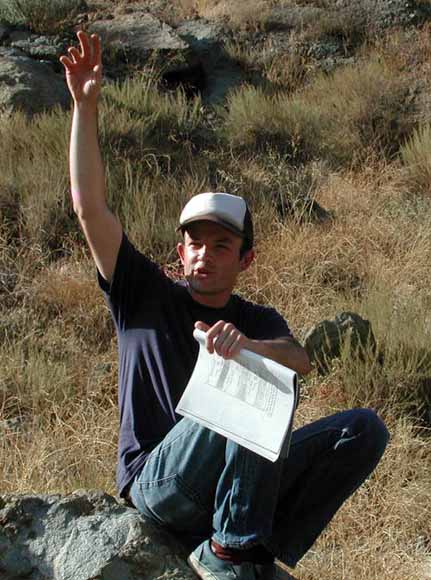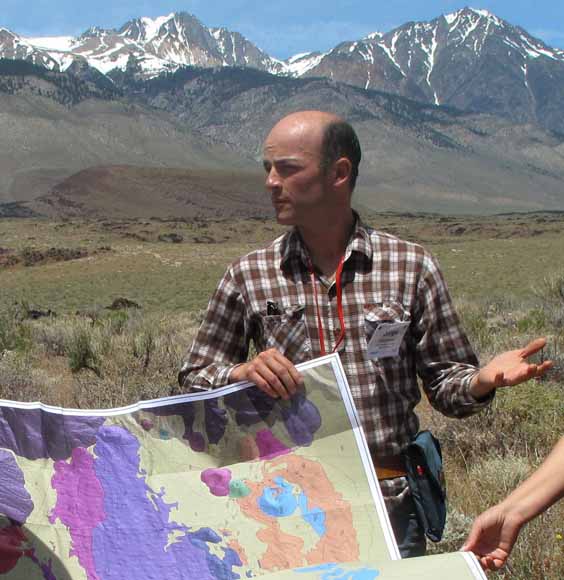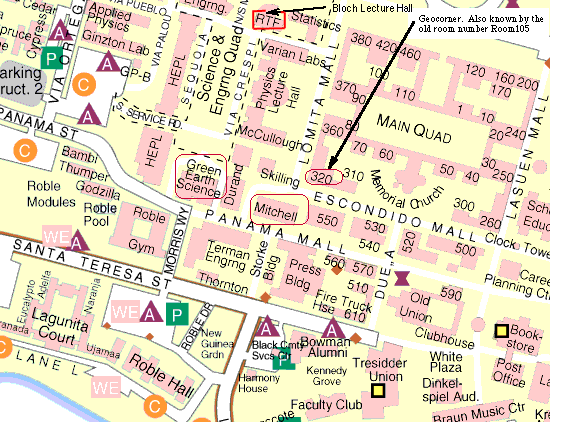
Presents
Location: Stanford University
This will be the 424th meeting since 1954
The durations over which magma accumulates and evolves beneath volcanoes is fundamental to understanding the potential for destructive volcanism, how magmas differentiate, and how plutonic rocks are emplaced. Despite this importance and our considerable understanding about how magmas evolve, the durations of magmatic evolution are poorly known. Fortunately, relatively new analytical techniques using ion microprobes for in situ sampling of isotopic and trace element zoning within single crystals from volcanic rocks allow quantitative limits to be placed on the timescales of magma crystallization and storage before eruption. Isotopic dating of uranium- and thorium-rich accessory minerals such as zircon and allanite erupted from Earth’s largest volcanoes (e.g., Yellowstone & Toba calderas) reveals that voluminous silicic magma chambers may assemble and crystallize over durations as long as hundreds of thousands of years prior to eruption. Small volume rhyolites (e.g., Coso, Salton Buttes) may be generated and stored over relatively short timescales (≤104 years), although they may inherit “old” crystals from remelting of young plutonic rocks. Relative dating using kinetic “smearing” of compositional zoning in major minerals by diffusion reveals that thermal and chemical changes in silicic magma chambers which may trigger eruption can occur over millennial or shorter timescales.

Dr. Vazquez received his Bachelor’s degree from California State University, Los Angeles, M.S. from Northern Arizona University, and Ph.D. from UCLA. Jorge studied pyroclastic-surge deposits and geology of the Hopi Buttes volcanic field, Arizona, for his Masters thesis. At UCLA, he focused on ion microprobe U–Th–Pb geochronology of allanite and zircon in Quaternary rhyolites (Toba Tuff, Indonesia; postcaldera rhyolites, Yellowstone) and on uranium-series geochemistry. His bibliography also includes papers on petrology and accessory mineral geochronology of young rhyolites from the Coso volcanic field and Salton Buttes, California, and plutonic rock fragments (xenoliths) from Hualalai and Mauna Kea volcanoes, Hawaii. Since 2004, Jorge has been Assistant Professor of Geology at California State University, Northridge. As the U.S. Geological Survey’s staff scientist he brings a strong background in ion microprobe geochronology, igneous petrology, geochemistry, and volcanology to the Stanford–USGS SHRIMP lab.

Jorge Vazquez
Reservations: The preferred way to make reservations is simply to email John Spritzer at jspritzer@usgs.gov by May 6, tell him you will attend, commit to pay, and bring your payment to the meeting. John always emails a confirmation; if you don’t get one, assume email crashed yet again and email him a second time. A check made to “PGS” is preferred, payable at the meeting.
If you want to pay in advance:
Everyone (including Stanford folks now) Please make dinner reservations by May 6. Contact John Spritzer, at U.S. Geological Survey, 345 Middlefield Road, MS-973 Menlo Park, CA 94025, Tel.: (650) 329-4833. Send check made out to “PGS” to John.
Dinner is $35.00. Includes wine (5:30 to 6:15 PM.) and dinner (6:15-7:30 PM.).
For students from all universities and colleges, the dinner, including the social 3/4-hour, is $8.00 and is partially subsidized thanks to the School of Earth Sciences, Stanford University (Note, no-show reservations owe the full price).
Doris, whose wonderful crew prepares our meals, asked that we let you know that people who are late RSVPing and people who show up without a reservation will be welcome but that they will be eating on paper plates with plastic utensils (food supply permitting).
Dues for Academic Year 2010-2011 ($10.00) should be sent to John Spritzer, U.S. Geological Survey, 345 Middlefield Road, MS-973 _Menlo Park, CA 94025. John’s phone: (650) 329-4833.
Officers: Jon Hagstrum, President; David Bedford, Vice President; Mike Diggles, Secretary; John Spritzer, Treasurer; Elizabeth Miller, PGS Stanford University Coordinator

Date created: April 22, 2011
Last modified: May 2, 2011
Created by: Mike Diggles, Webmaster-Secretary, PGS.